Haru Imperial Navy: Difference between revisions
(Created page with "Haruspex ===<big>Haru Imperial Navy</big>=== '''Naval Strategy The Sovereign Imperium maintains a sizable naval force, and said force is split into four main fleets and t...") |
|||
| (32 intermediate revisions by the same user not shown) | |||
| Line 1: | Line 1: | ||
[[Haruspex]] | [[Haruspex]] | ||
===<big>Haru Imperial Navy</big>=== | ===<big>Haru Imperial Navy</big>=== | ||
The Sovereign Imperium maintains a sizable naval force, and said force is split into four main fleets and twelve strike fleets that act in accordance with each other when deployed. At the core of the fleets are strike aircraft embarked on carriers and large-deck amphibious ships. Carrier strike groups and expeditionary strike groups often will operate together in theater, although they generally will steam independently to spread capabilities widely. Balancing the presence of carrier strike groups and expeditionary strike groups, as well as forming them into expeditionary strike forces on occasion, are key to achieving operational effectiveness and efficiency. | The Sovereign Imperium maintains a sizable naval force, and said force is split into four main fleets and twelve strike fleets that act in accordance with each other when deployed. At the core of the fleets are strike aircraft embarked on carriers and large-deck amphibious ships. Carrier strike groups and expeditionary strike groups often will operate together in theater, although they generally will steam independently to spread capabilities widely. Balancing the presence of carrier strike groups and expeditionary strike groups, as well as forming them into expeditionary strike forces on occasion, are key to achieving operational effectiveness and efficiency. | ||
| Line 9: | Line 7: | ||
The Imperial Navy also has the capabilities to accomplish a wide array of military operations. Such capabilities include wide-area sensing; communications and command and control; compliant and noncompliant boardings; precision strike; and self-defense. | The Imperial Navy also has the capabilities to accomplish a wide array of military operations. Such capabilities include wide-area sensing; communications and command and control; compliant and noncompliant boardings; precision strike; and self-defense. | ||
The resultant constellation of widely dispersed, netted naval power integrated with HIN and allied forces across a unified battle space will operationalize the Imperial Navy's vision. Such forces will be well positioned and equipped to take the fight to the enemy. | The resultant constellation of widely dispersed, netted naval power integrated with HIN and allied forces across a unified battle space will operationalize the Imperial Navy's vision. Such forces will be well positioned and equipped to take the fight to the enemy. | ||
===Naval Strategy=== | |||
* '''Patience and dwell'''. Current Imperium military doctrine calls for overwhelming force and rapid maneuver, but the global war will require additional qualities. In many situations, naval forces will wait weeks, months, perhaps even years before striking. Such operations will involve patiently observing the environment to cultivate a rich understanding of sea and air traffic patterns, prepositioning ships to intercept terrorists at sea, and loitering offshore awaiting the proper time to strike key targets. | * '''Patience and dwell'''. Current Imperium military doctrine calls for overwhelming force and rapid maneuver, but the global war will require additional qualities. In many situations, naval forces will wait weeks, months, perhaps even years before striking. Such operations will involve patiently observing the environment to cultivate a rich understanding of sea and air traffic patterns, prepositioning ships to intercept terrorists at sea, and loitering offshore awaiting the proper time to strike key targets. | ||
| Line 65: | Line 64: | ||
}} | }} | ||
| Missile range instrumentation | | Missile range instrumentation | ||
| | | 22 | ||
| {{flag|Haruspex}} | | {{flag|Haruspex}} | ||
| {{plainlist| | | {{plainlist| | ||
| Line 72: | Line 71: | ||
| | | | ||
|- | |- | ||
| [[File:CrabyntClass.gif|150px]] | |||
| VCI-NRCD | |||
| Crabynt (Shepard)-class | |||
| {{plainlist| | |||
}} | |||
| Hosptial Ship | |||
| 26 | |||
| {{flag|Haruspex}} | |||
| {{flag|Haruspex}} | |||
| | |||
|} | |||
===Replenishment Vessels=== | |||
{| class="wikitable" | |||
! Image | |||
! Manufacturer | |||
! Designation | |||
! Variants | |||
! Type | |||
! Quantity | |||
! Country of Origin | |||
! Operators | |||
! Notes | |||
|- | |||
| [[File:Uddan.jpg|150px]] | |||
| VCI-NRCD | |||
| Uddan B1-class | |||
| {{plainlist| | |||
Uddan A1<br>Uddan A2}} | |||
| Fleet replenishment | |||
| 122 | |||
| {{flag|Haruspex}} | |||
| {{flag|Haruspex}} | |||
| | |||
|- | |||
| [[File:L7daui7j.jpg|150px]] | |||
| PSY #12 | |||
| Lnuf-class | |||
| {{plainlist| | |||
}} | |||
| Replenishment oiler | |||
| 116 | |||
| {{flag|Haruspex}} | |||
| {{flag|Haruspex}} | |||
| | |||
|} | |||
===Sealift and Supply=== | |||
{| class="wikitable" | |||
|- | |||
! Image | |||
! Manufacturer | |||
! Designation | |||
! Variants | |||
! Type | |||
! Quantity | |||
! Country of Origin | |||
! Operators | |||
! Notes | |||
|- | |||
| [[File:Uqah.jpg|150px]] | |||
| VCI-NRCD | |||
| Uqah-class | |||
| | |||
| Roll-on/Roll-off cargo and logistics support | |||
| 108 | |||
| {{flag|Haruspex}} | |||
| {{flag|Haruspex}} | |||
| | |||
|} | |||
===Support Vessels=== | |||
{| class="wikitable" | |||
! Image | |||
! Manufacturer | |||
! Designation | |||
! Variants | |||
! Type | |||
! Quantity | |||
! Country of Origin | |||
! Operators | |||
! Notes | |||
|- | |||
| [[File:N1ClassSV.png|150px]] | |||
| HIA | |||
| N1 Support Class | |||
| {{plainlist| | |||
}} | |||
| Logistic Support Ship | |||
| 146 | |||
| {{flag|Haruspex}} | |||
| {{plainlist| | |||
* {{flag|Haruspex}}}} | |||
| https://www.artstation.com/stas_sayhallo | |||
| | |||
|- | |||
| [[File:N2ClassSV.png|150px]] | |||
| HIA | |||
| N2 Support Class | |||
| {{plainlist| | |||
}} | |||
| Submarine Tender | |||
| 59 | |||
| {{flag|Haruspex}} | |||
| {{plainlist| | |||
* {{flag|Haruspex}}}} | |||
| Standard imperial tender vessel. | |||
| | |||
|- | |||
| [[File:N4PSV.png|150px]] | |||
| HIA | |||
| N4 MPSV Class | |||
| {{plainlist| | |||
}} | |||
| Multi Purpose Supply | |||
| 139 | |||
| {{flag|Haruspex}} | |||
| {{plainlist| | |||
* {{flag|Haruspex}}}} | |||
| https://www.artstation.com/3-dimensional | |||
| | |||
|- | |||
| [[File:Hunlun.jpg|150px]] | |||
| HIA | |||
| Nyjah (Raven) Class | |||
| {{plainlist| | |||
}} | |||
| Fast Combat Supply Support Ship | |||
| 127 | |||
| {{flag|Haruspex}} | |||
| {{plainlist| | |||
* {{flag|Haruspex}}}} | |||
| | |||
| | |||
|} | |} | ||
| Line 92: | Line 225: | ||
}} | }} | ||
| Fast Patrol Attack Craft | | Fast Patrol Attack Craft | ||
| | | 552 | ||
| {{flag|Haruspex}} | | {{flag|Haruspex}} | ||
| {{plainlist| | | {{plainlist| | ||
* {{flag|Haruspex}}}} | * {{flag|Haruspex}}}} | ||
{{flag| | | HIN Primary FPAC. | ||
| | | | ||
|- | |||
| [[File:CbaynMB.jpg|150px]] | |||
| HIA | |||
| 207 Cbayn (Spear) | |||
| {{plainlist| | |||
}} | |||
| Missile Boat | |||
| 534 | |||
| {{flag|Haruspex}} | |||
| {{plainlist| | |||
* {{flag|Haruspex}}}} | |||
| HIN Primary Missile Boat. | |||
| | | | ||
|- | |- | ||
| Line 120: | Line 265: | ||
}} | }} | ||
| Corvette | | Corvette | ||
| | | 152 | ||
| {{flag|Haruspex}} | | {{flag|Haruspex}} | ||
| {{plainlist| | | {{plainlist| | ||
* {{flag|Haruspex}}}} | * {{flag|Haruspex}}}} | ||
{{flag| | | HIN Primary. | ||
| | | | ||
|- | |||
|} | |||
===Minelayer & Sweeper=== | |||
{| class="wikitable" | |||
! Image | |||
! Manufacturer | |||
! Designation | |||
! Variants | |||
! Type | |||
! Quantity | |||
! Country of Origin | |||
! Operators | |||
! Notes | |||
|- | |||
| [[File:N6ClassMSV.png|150px]] | |||
| HIA | |||
| N6 Caagan (Seeker) Class | |||
| {{plainlist| | |||
}} | |||
| Minesweeper and Patrol Vessel | |||
| 71 | |||
| {{flag|Haruspex}} | |||
| {{plainlist| | |||
* {{flag|Haruspex}}}} | |||
| HIN Primary. | |||
| | |||
|- | |||
| [[File:N5ClassMSW.png|150px]] | |||
| HIA | |||
| N5 Clyjyhkan (Scavanger) Class | |||
| {{plainlist| | |||
}} | |||
| Minesweeper and Patrol Vessel | |||
| 64 | |||
| {{flag|Haruspex}} | |||
| {{plainlist| | |||
* {{flag|Haruspex}}}} | |||
| HIN secondary service vessel. | |||
| | | | ||
|- | |- | ||
| Line 148: | Line 332: | ||
}} | }} | ||
| Amphibious Assault Ship | | Amphibious Assault Ship | ||
| | | 130 | ||
| {{flag|Haruspex}} | | {{flag|Haruspex}} | ||
| {{plainlist| | | {{plainlist| | ||
| Line 161: | Line 345: | ||
}} | }} | ||
| Amphibious Assault Carrier | | Amphibious Assault Carrier | ||
| | | 110 | ||
| {{flag|Haruspex}} | | {{flag|Haruspex}} | ||
| {{plainlist| | | {{plainlist| | ||
| Line 188: | Line 372: | ||
}} | }} | ||
| Destroyer | | Destroyer | ||
| | | 120 | ||
| {{flag|Haruspex}} | | {{flag|Haruspex}} | ||
| {{plainlist| | | {{plainlist| | ||
| Line 201: | Line 385: | ||
}} | }} | ||
| Destroyer | | Destroyer | ||
| | | 112 | ||
| {{flag|Haruspex}} | | {{flag|Haruspex}} | ||
| {{plainlist| | | {{plainlist| | ||
| Line 218: | Line 402: | ||
! Type | ! Type | ||
! Quantity | ! Quantity | ||
! Operators | ! Operators | ||
! Notes | ! Notes | ||
| Line 228: | Line 411: | ||
}} | }} | ||
| Guided Missile Frigate | | Guided Missile Frigate | ||
| | | 202 | ||
| {{flag|Haruspex}} | |||
| {{plainlist| | |||
{{flag|Haruspex}}}} | |||
| HIN Primary. | |||
| | |||
|- | |||
|} | |||
===Conventional Submarines=== | |||
{| class="wikitable" | |||
! Image | |||
! Manufacturer | |||
! Designation | |||
! Variants | |||
! Type | |||
! Quantity | |||
! Country of Origin | |||
! Operators | |||
! Notes | |||
|- | |||
| [[File:Crehehk Cuh.jpg|150px]] | |||
| HIA | |||
| Type 39 Crehehk Cuh (Shining Son) Class | |||
| {{plainlist| | |||
}} | |||
| Attack Submarine | |||
| 26 | |||
| {{flag|Haruspex}} | | {{flag|Haruspex}} | ||
| {{plainlist| | | {{plainlist| | ||
* {{flag|Haruspex}}}} | * {{flag|Haruspex}}}} | ||
| | | Diesel-Electric Attack Submarine, generally used for coastal defense and training. | ||
| | |||
|- | |||
|} | |||
===Nuclear Attack Submarines=== | |||
{| class="wikitable" | |||
! Image | |||
! Manufacturer | |||
! Designation | |||
! Variants | |||
! Type | |||
! Quantity | |||
! Country of Origin | |||
! Operators | |||
! Notes | |||
|- | |||
| [[File:Lydvecr.png|150px]] | |||
| HIA | |||
| Type 42 Lydvecr-class | |||
| | |||
| Fleet Submarine | |||
| 15 | |||
| {{flag|Haruspex}} | |||
| {{plainlist| | |||
* {{flag|Haruspex}}}} | |||
| | |||
|- | |||
| [[File:Lydvecr.png|150px]] | |||
| HIA | |||
| Type 43 Felgat-class | |||
| | |||
| Fleet Submarine | |||
| 15 | |||
| {{flag|Haruspex}} | |||
| {{plainlist| | |||
* {{flag|Haruspex}}}} | |||
| | |||
|- | |||
| [[File:Type44.png|150px]] | |||
| HIA | |||
| Type 44 Cyht Dekan-class | |||
| | |||
| Fleet Submarine | |||
| 18 | |||
| {{flag|Haruspex}} | |||
| {{plainlist| | |||
* {{flag|Haruspex}}}} | |||
| | |||
|- | |||
|} | |||
===Missile Submarines=== | |||
{| class="wikitable" | |||
! Image | |||
! Manufacturer | |||
! Designation | |||
! Variants | |||
! Type | |||
! Quantity | |||
! Country of Origin | |||
! Operators | |||
! Notes | |||
|- | |||
| [[File:Type50.png|150px]] | |||
| HIA | |||
| Type 50 Binevean (Purifier) Class | |||
| | |||
| Guided Missile Submarine | |||
| 14 | |||
| {{flag|Haruspex}} | |||
| {{plainlist| | |||
* {{flag|Haruspex}}}} | |||
| | |||
|- | |||
| [[File:TYPE51.png|150px]] | |||
| HIA | |||
| Type 51 Tyng Sudran (Dark Mother) Class | |||
| | |||
| Guided Missile Submarine | |||
| 13 | |||
| {{flag|Haruspex}} | |||
| {{plainlist| | |||
* {{flag|Haruspex}}}} | |||
| | |||
|- | |||
| [[File:Type53.png|150px]] | |||
| HIA | |||
| Type 53 Freda Cryng (White Shark) Class | |||
| | |||
| Ballistic Missile Submarine | |||
| 16 | |||
| {{flag|Haruspex}} | |||
| {{plainlist| | |||
* {{flag|Haruspex}}}} | |||
| | |||
|- | |||
| [[File:Dobruuh.png|150px]] | |||
| HIA | |||
| Type 55 Dobruuh (Typhoon) Class | |||
| | |||
| Ballistic Missile Submarine | |||
| 12 | |||
| {{flag|Haruspex}} | |||
| {{plainlist| | |||
* {{flag|Haruspex}}}} | |||
| | |||
|- | |||
| [[File:Type55small.png|150px]] | |||
| HIA | |||
| Type 58 Fetuf (Widow) Class | |||
| | |||
| Ballistic Missile Submarine | |||
| 18 | |||
| {{flag|Haruspex}} | |||
| {{plainlist| | |||
* {{flag|Haruspex}}}} | |||
| | |||
|- | |||
|} | |||
===Prototype Submarines=== | |||
{| class="wikitable" | |||
! Image | |||
! Manufacturer | |||
! Designation | |||
! Variants | |||
! Type | |||
! Quantity | |||
! Country of Origin | |||
! Operators | |||
! Notes | |||
|- | |||
| [[File:Type193194.png|150px]] | |||
| HIA | |||
| Type 93 and 94 Benyhrhy (Piranhna) Class | |||
| | | | ||
| Prototype Ballistic Missile Submarines | |||
| 2-1 Lost at sea. | |||
| {{flag|Haruspex}} | |||
| {{plainlist| | |||
* {{flag|Haruspex}}}} | |||
| | |||
|- | |- | ||
|} | |} | ||
Latest revision as of 12:58, 29 March 2024
The Sovereign Imperium maintains a sizable naval force, and said force is split into four main fleets and twelve strike fleets that act in accordance with each other when deployed. At the core of the fleets are strike aircraft embarked on carriers and large-deck amphibious ships. Carrier strike groups and expeditionary strike groups often will operate together in theater, although they generally will steam independently to spread capabilities widely. Balancing the presence of carrier strike groups and expeditionary strike groups, as well as forming them into expeditionary strike forces on occasion, are key to achieving operational effectiveness and efficiency.
Providing sea-based security while concurrently waging a highly focused and agile offensive campaign, emphasizing the role of actionable intelligence, integrated allied forces if present, speed, maneuver, and deception. Much of this activity can be grouped under “maritime security operations,” reflecting a wide band of operational activities designed to secure and protect use of the seas from hostile threat.
The Imperial Navy also has the capabilities to accomplish a wide array of military operations. Such capabilities include wide-area sensing; communications and command and control; compliant and noncompliant boardings; precision strike; and self-defense.
The resultant constellation of widely dispersed, netted naval power integrated with HIN and allied forces across a unified battle space will operationalize the Imperial Navy's vision. Such forces will be well positioned and equipped to take the fight to the enemy.
- Patience and dwell. Current Imperium military doctrine calls for overwhelming force and rapid maneuver, but the global war will require additional qualities. In many situations, naval forces will wait weeks, months, perhaps even years before striking. Such operations will involve patiently observing the environment to cultivate a rich understanding of sea and air traffic patterns, prepositioning ships to intercept terrorists at sea, and loitering offshore awaiting the proper time to strike key targets.
- Speed and precision. We also will need the ability to “sprint” when necessary to take out fleeting targets. This is best illustrated by strikes to kill hostile forces, or destroy hostile infrastructure and targeting mechanisms. The continuous networking of engagement-quality information will be critical to generating such speed, not only to guide weapons but also to allow real-time collaborative planning that generates the right amount of force at the optimal time and place.
- Timely intelligence and rapid analysis. The most important requirement of the global war setting is actionable intelligence. Our ability to find, fix, and kill hostiles from the sea is dependent on quality intelligence. To achieve it, we must integrate databases, streamline analysis, and develop information-routing aids that push vital information to the user when needed.
- Managing uncertainty. Successful warriors always have been skilled at operating effectively despite uncertainty. That ability will be especially important in the wars to come, in which we will have difficulty discerning adversary forces, methods, and intentions. We must use every tool at our disposal to minimize uncertainty, including human reporting and advanced technical intelligence collection techniques. We also must understand that the desire for “perfect” information is the enemy of “good enough” when fighting an adversary who will be visible to only one sensor or another for short periods of time. We must expect that some boardings and strikes will be unsuccessful in the narrow sense of the word. That is acceptable, even good, because such actions will keep the enemy on the defensive.
- Creating uncertainty. We must create uncertainty in the minds of our opponents. The greater the uncertainty in the minds of our opponents, the more difficult it is for them to generate a coherent defense, much less an effective offense. The Imperial Navy’s new fleet response plan helps achieve that goal by generating less predictable operating patterns, complicating enemy planning efforts.
- Preempting the enemy. The Sovereign Imperium's Strategic Command prescribes the selective use of preemption. Toward that end, maritime forces provide the Emperor with valuable options, ranging from long-range precision strike to the landing of ground forces. Best of all, maritime preemption options provide the speed so vital to success in the global conflicts to come, without dependence on foreign basing or permission.
- Enhancing economic security and stability. Because a primary goal of our enemies is economic dislocation leading to political collapse, maritime forces must provide security to offshore economic infrastructure and trade. Defeat of seaborne enemy forces, is central to that effort. Embracing this mission will lead to important changes in how naval forces train and operate. In many ways, the capabilities and operating patterns we must adopt in the global conflicts to come, will reflect the sea control lessons of the Battle of the Ranke Sea, in our home region of Europa. In the long-term struggle to enhance maritime security, small numbers of widely dispersed forces will dominate the battle space in their immediate vicinity, protecting vital assets and destroying those who would attack them.
Operational Initiatives
- Distributing netted striking power widely. The best defense remains a good offense, and in the war against enemy forces, that requires on-station forces capable of delivering swift and precise attacks. The Navy’s recent shift toward streamlined carrier strike groups and highly capable expeditionary strike groups is on target in this regard. The new fleet taking shape today is designed specifically to operate widely and efficiently while prepositioning unprecedented firepower from the sea.
- Protecting critical maritime infrastructure. Increasingly, global economic growth and prosperity rely on secure sea spaces. In the Ranke Sea, for example, the security of offshore oil platforms is critical to the economic health of coastal states. Protecting key economic assets from attack will be a growing role for military forces in every theater.
- Protecting sea-lanes. Defending shipping—large and small—extends the “Sea Shield” over thousands of individuals whose economic well-being is critical to winning any global conflict. Protection of critical straits in concert with allied partners is central to this effort, as well, as piracy is on the increase in many parts of the wurld. Reported attacks on ships were nearly 40% higher in the first half of 2003 than in the previous year, approaching 6 attacks per 1,000 ships.
- Employing sea bases. Minimizing the permanent presence of ground forces outside the Principality has long-term advantages, particularly in the Ranke region. Consequently, the importance of mobile, sovereign, and secure sea bases will grow in the years ahead. Such sea bases will allow us to preposition strike and shield forces, as well as serve as staging points for logistics that draw on high-speed transportation vehicles to provide timely support around the wurld.
- Sustaining readiness. The nature of unconventional enemies and the Navy’s new fleet response plan demand sustained readiness to surge and strike quickly. To meet that challenge, carrier and expeditionary strike groups should implement Strike Group Readiness Teams—trained senior officer groups within the lifelines of the strike groups—to fully leverage training investment opportunities whenever and wherever they arise.
- Expanding international military education and training. Military leaders play important roles in shaping national policies. Sharing Haruspex values with foreign naval officers early in their careers, and maintaining contact with them as they gain seniority, is a wise investment that will cultivate allies in our long-term effort to integrate all nations into the international community.
- Establishing naval liaison elements. Enhancing security in littoral areas is a coalition effort best achieved with local authorities in an integrated and sustained manner. Successful littoral defense requires an intimate knowledge of operating areas, cultures, and languages. The presence of naval liaison officers at key ports will serve that end, increasing situational awareness, intelligence, and trust.
- Maximizing boarding capabilities. Successful counterterrorism efforts rely on speed of execution and continual readiness to seize the initiative. To strengthen those capabilities, we should integrate training efforts with our coalition partners to ensure boarding teams are highly interoperable and optimally prepared for any contingency. Exciting synergies also exist with the House Legions communities to provide enhanced firepower when the situation requires.
- Investing in unmanned surveillance assets. Terrorism relies on stealth. Consequently, defense against terrorism requires continual vigilance. Yet, sustaining effective and comprehensive surveillance is tremendously expensive and asset intensive. The time is ripe to invest in unmanned surveillance platforms that operate on, over, and below the surface of the sea, to augment intelligence collection currently accomplished by manned naval platforms such as submarines and maritime patrol and reconnaissance aircraft. The recent forward testing of the Ferret, an unmanned surface vehicle with infrared and electro-optical capability, is a step in the right direction.
- Strengthening joint and coalition interoperability. The timely sharing of information between joint and coalition forces is fundamental to coordinating effective operations. Pursuant to that goal, ongoing initiatives to expand and standardize Principality information-sharing tools such as Knowledge Web and the allied shared Battlenet system will pay big dividends in combat effectiveness.
Specialized Vessels
| Image | Manufacturer | Designation | Variants | Type | Quantity | Country of Origin | Operators | Notes | |
|---|---|---|---|---|---|---|---|---|---|

|
HIA | N3 RTSV Class | Missile range instrumentation | 22 | Primary tracking rocket/missile tracking vessel. | ||||
| VCI-NRCD | Crabynt (Shepard)-class | Hosptial Ship | 26 |
Replenishment Vessels
| Image | Manufacturer | Designation | Variants | Type | Quantity | Country of Origin | Operators | Notes |
|---|---|---|---|---|---|---|---|---|

|
VCI-NRCD | Uddan B1-class | Uddan A1
Uddan A2 |
Fleet replenishment | 122 | |||

|
PSY #12 | Lnuf-class | Replenishment oiler | 116 |
Sealift and Supply
| Image | Manufacturer | Designation | Variants | Type | Quantity | Country of Origin | Operators | Notes |
|---|---|---|---|---|---|---|---|---|

|
VCI-NRCD | Uqah-class | Roll-on/Roll-off cargo and logistics support | 108 |
Support Vessels
| Image | Manufacturer | Designation | Variants | Type | Quantity | Country of Origin | Operators | Notes | |
|---|---|---|---|---|---|---|---|---|---|

|
HIA | N1 Support Class | Logistic Support Ship | 146 | https://www.artstation.com/stas_sayhallo | ||||
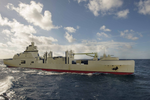
|
HIA | N2 Support Class | Submarine Tender | 59 | Standard imperial tender vessel. | ||||
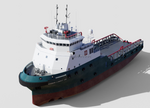
|
HIA | N4 MPSV Class | Multi Purpose Supply | 139 | https://www.artstation.com/3-dimensional | ||||

|
HIA | Nyjah (Raven) Class | Fast Combat Supply Support Ship | 127 |
Fast Attack Patrol Craft
| Image | Manufacturer | Designation | Variants | Type | Quantity | Country of Origin | Operators | Notes | |
|---|---|---|---|---|---|---|---|---|---|

|
HIA | 202 Cemjanvecr (Silverfish) FPAC | Fast Patrol Attack Craft | 552 | HIN Primary FPAC. | ||||

|
HIA | 207 Cbayn (Spear) | Missile Boat | 534 | HIN Primary Missile Boat. |
Corvettes
| Image | Manufacturer | Designation | Variants | Type | Quantity | Country of Origin | Operators | Notes | |
|---|---|---|---|---|---|---|---|---|---|
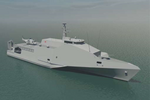
|
HIA | 205 Ymekydun (Alligator) Class | Corvette | 152 | HIN Primary. |
Minelayer & Sweeper
| Image | Manufacturer | Designation | Variants | Type | Quantity | Country of Origin | Operators | Notes | |
|---|---|---|---|---|---|---|---|---|---|
| HIA | N6 Caagan (Seeker) Class | Minesweeper and Patrol Vessel | 71 | HIN Primary. | |||||
| HIA | N5 Clyjyhkan (Scavanger) Class | Minesweeper and Patrol Vessel | 64 | HIN secondary service vessel. |
Amphibious Assault/Carrier Ships
| Image | Manufacturer | Designation | Variants | Type | Quantity | Country of Origin | Operators | Notes | |
|---|---|---|---|---|---|---|---|---|---|

|
HIA | Dymuh (Talon) Class | Amphibious Assault Ship | 130 | HIN Primary. | ||||
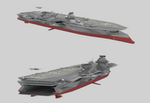
|
HIA | Cay Kut (Sea God) Class | Amphibious Assault Carrier | 110 | HIN Primary. |
Destroyers
| Image | Manufacturer | Designation | Variants | Type | Quantity | Country of Origin | Operators | Notes | |
|---|---|---|---|---|---|---|---|---|---|
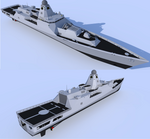
|
HIA | 210 Dekan (Tiger) Class | Destroyer | 120 | HIN Primary. | ||||

|
HIA | 214 Olath Vlos (Dark Blood) Class | Destroyer | 112 | HIN Primary. |
Frigates
| Image | Manufacturer | Designation | Variants | Type | Quantity | Operators | Notes | ||
|---|---|---|---|---|---|---|---|---|---|
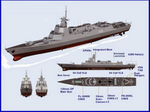
|
HIA | 212 Cfunt (Sword) Class | Guided Missile Frigate | 202 | HIN Primary. |
Conventional Submarines
| Image | Manufacturer | Designation | Variants | Type | Quantity | Country of Origin | Operators | Notes | |
|---|---|---|---|---|---|---|---|---|---|

|
HIA | Type 39 Crehehk Cuh (Shining Son) Class | Attack Submarine | 26 | Diesel-Electric Attack Submarine, generally used for coastal defense and training. |
Nuclear Attack Submarines
| Image | Manufacturer | Designation | Variants | Type | Quantity | Country of Origin | Operators | Notes |
|---|---|---|---|---|---|---|---|---|
| HIA | Type 42 Lydvecr-class | Fleet Submarine | 15 | |||||
| HIA | Type 43 Felgat-class | Fleet Submarine | 15 | |||||
| HIA | Type 44 Cyht Dekan-class | Fleet Submarine | 18 |
Missile Submarines
| Image | Manufacturer | Designation | Variants | Type | Quantity | Country of Origin | Operators | Notes |
|---|---|---|---|---|---|---|---|---|
| HIA | Type 50 Binevean (Purifier) Class | Guided Missile Submarine | 14 | |||||
| HIA | Type 51 Tyng Sudran (Dark Mother) Class | Guided Missile Submarine | 13 | |||||
| HIA | Type 53 Freda Cryng (White Shark) Class | Ballistic Missile Submarine | 16 | |||||
| HIA | Type 55 Dobruuh (Typhoon) Class | Ballistic Missile Submarine | 12 | |||||

|
HIA | Type 58 Fetuf (Widow) Class | Ballistic Missile Submarine | 18 |
Prototype Submarines
| Image | Manufacturer | Designation | Variants | Type | Quantity | Country of Origin | Operators | Notes |
|---|---|---|---|---|---|---|---|---|

|
HIA | Type 93 and 94 Benyhrhy (Piranhna) Class | Prototype Ballistic Missile Submarines | 2-1 Lost at sea. |